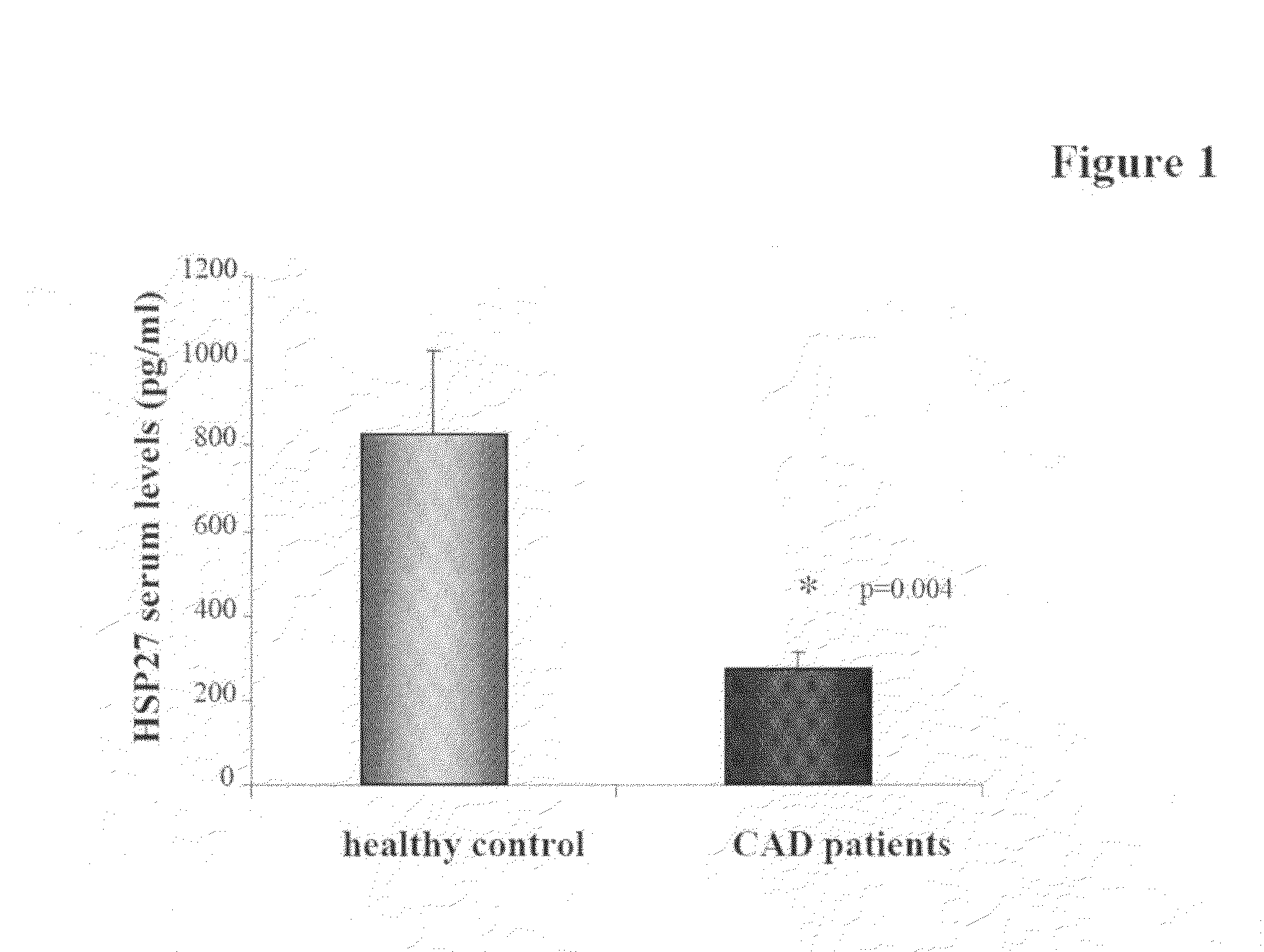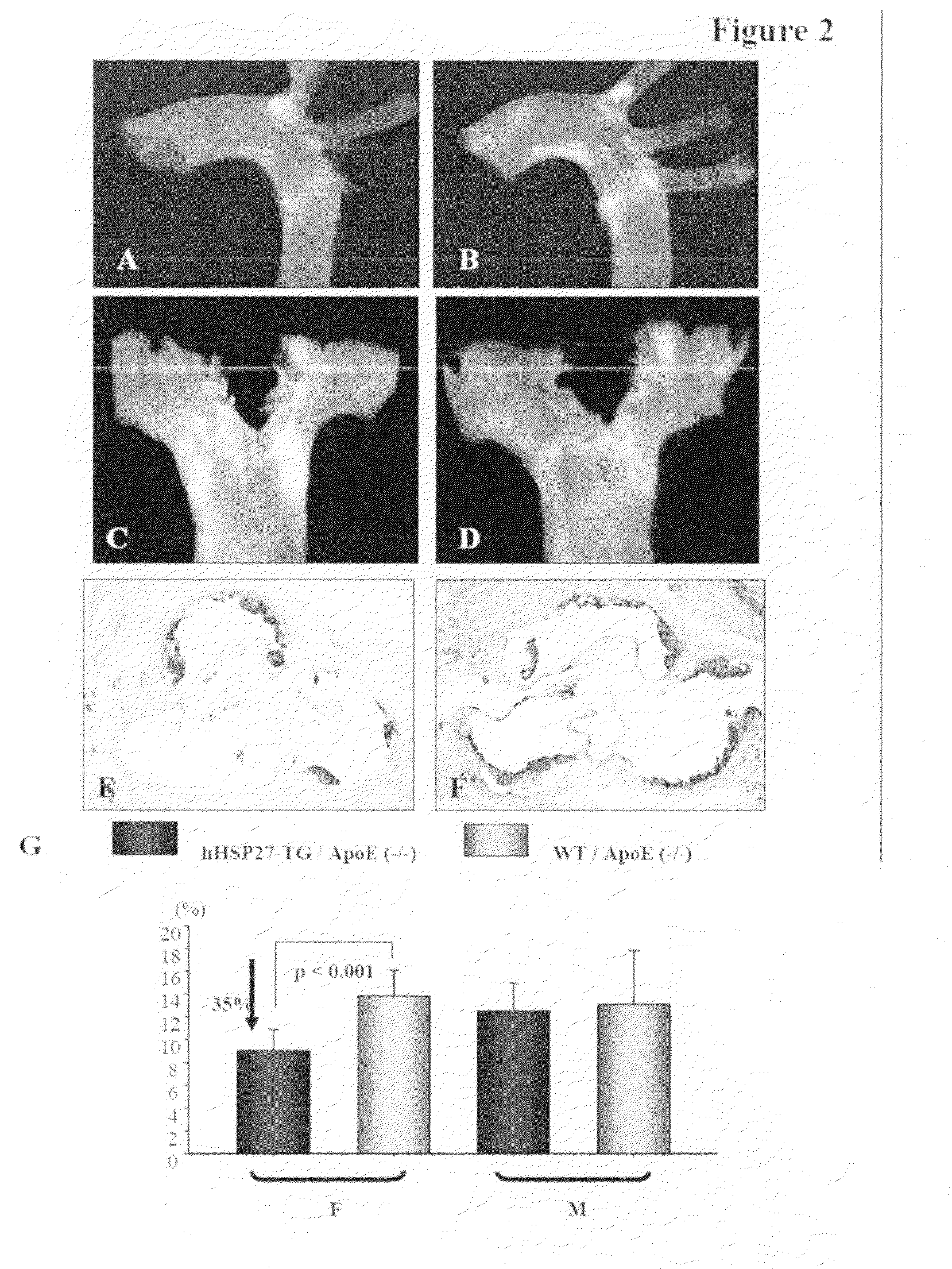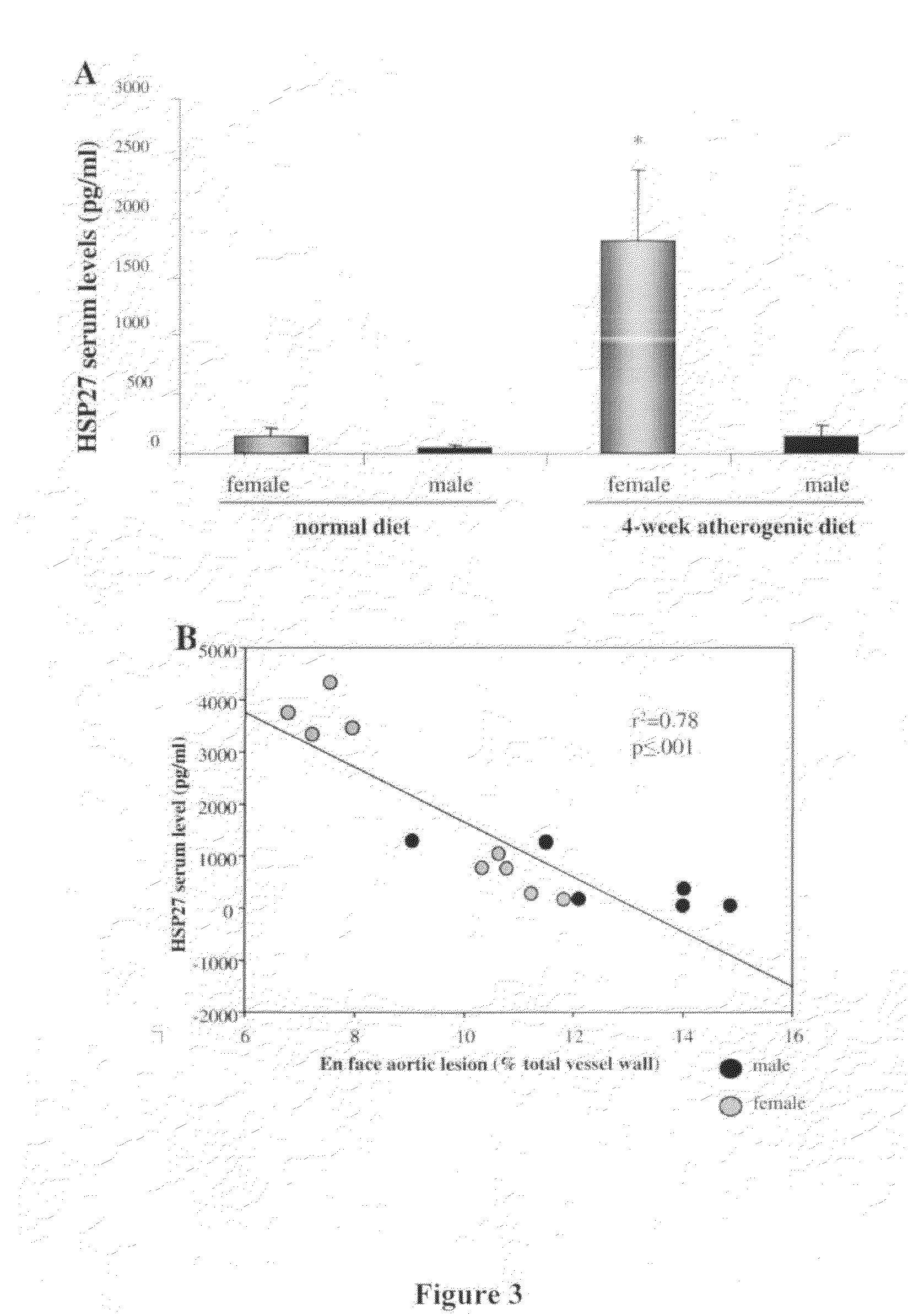Use of heat-shock protein 27 for cardiovascular disease prevention and treatment
a technology of heat shock protein and cardiovascular disease, applied in the field of cardiovascular disease, can solve the problems of too late to derive an “atheroprotective
- Summary
- Abstract
- Description
- Claims
- Application Information
AI Technical Summary
Benefits of technology
Problems solved by technology
Method used
Image
Examples
example 1
Expression of HSP27 In Vivo
[0071]It has been suggested that HSP27 can serve as a biomarker for both carotid atherosclerosis and acute coronary syndrome14. As shown in FIG. 1, patients suffering from stable coronary disease (as demonstrated angiographically by coronary stenosis greater than 50%) demonstrate a 3-fold reduction in circulating HSP27 levels in the serum when compared to healthy, age-matched controls (828±195 vs. 272±38 pg / ml; p≦0.05). A negative correlation coefficient of −0.90 was observed. Serum HSP27 levels from healthy controls are in the left column and patients with stable CAD are in the right column (*p=0.004). Thus, HSP27 expression in the serum appears to be reduced in stable CAD. Patients with stable CAD also had reduced HSP27 serum levels when compared to those suffering from acute coronary syndrome (ACS).
example 2
Mouse Model of Atherosclerosis
[0072]Using a mouse model of inflammatory atherosclerosis, the effects of over-expressing human HSP27 (HSP27o / e) were examined in the development of disease. ApoE− / − HSP27o / e and apoE− / − mice were placed on a high-cholesterol diet for 4 weeks and euthanized at 10-weeks of age. There was no difference in mean bodyweight or length between HSP27Tg and WT mice, nor where there any differences between total serum cholesterol levels between these mice. FIGS. 2A to 2G show that the percentage aortic lesion area, measured by quantitative histomorphology of en face specimens, was reduced by 41% in the female HSP27Tg / apoE− / − vs. WT / apoE− / − mice (p− / − HSP27o / e) (FIGS. 2A, 2C, 2E) and compared to their apoE− / − littermates (FIGS. 2B, 2D, 2F). Quantification of lesion area / total aortic area (FIG. 2G) demonstrates there was a 35% reduction in lesion burden in apoE− / − HSP27o / e female mice compared to apoE− / − (*p− / −HSP27o / e and WT / apoE− / − mice, suggestive of a role of o...
example 3
HSP27 Secretion In Vitro in Response to Estrogen and acLDL
[0074]As serum HSP27 levels inversely correlate with aortic lesion area in mice fed a cholesterol-enriched diet, and is 10-fold higher in females than in males, we determined in vitro whether HSP27 is released on stimulation with estradiol (E2) or atherogenic acetylated low-density lipoprotein (acLDL). Human macrophages (U937) were plated in replicates at a density of 1—106 per well and treated with estradiol or acLDL. Conditioned media was collected and before analysis for secreted HSP27, overall cell viability was measured using an LDH-release assay and revealed no difference in cell viability or membrane integrity between any of the treatments (data not shown). Treatment of macrophages with estrogen (E2) for 24 hours caused a dose-dependent increase in HSP27 release into the media compared to controls (FIG. 4A). Estrogen-induced HSP27 release also increased over time, with maximum secretion after 24 hours (FIG. 4B). Macrop...
PUM
| Property | Measurement | Unit |
|---|---|---|
| concentrations | aaaaa | aaaaa |
| concentrations | aaaaa | aaaaa |
| size | aaaaa | aaaaa |
Abstract
Description
Claims
Application Information
 Login to View More
Login to View More - R&D
- Intellectual Property
- Life Sciences
- Materials
- Tech Scout
- Unparalleled Data Quality
- Higher Quality Content
- 60% Fewer Hallucinations
Browse by: Latest US Patents, China's latest patents, Technical Efficacy Thesaurus, Application Domain, Technology Topic, Popular Technical Reports.
© 2025 PatSnap. All rights reserved.Legal|Privacy policy|Modern Slavery Act Transparency Statement|Sitemap|About US| Contact US: help@patsnap.com



